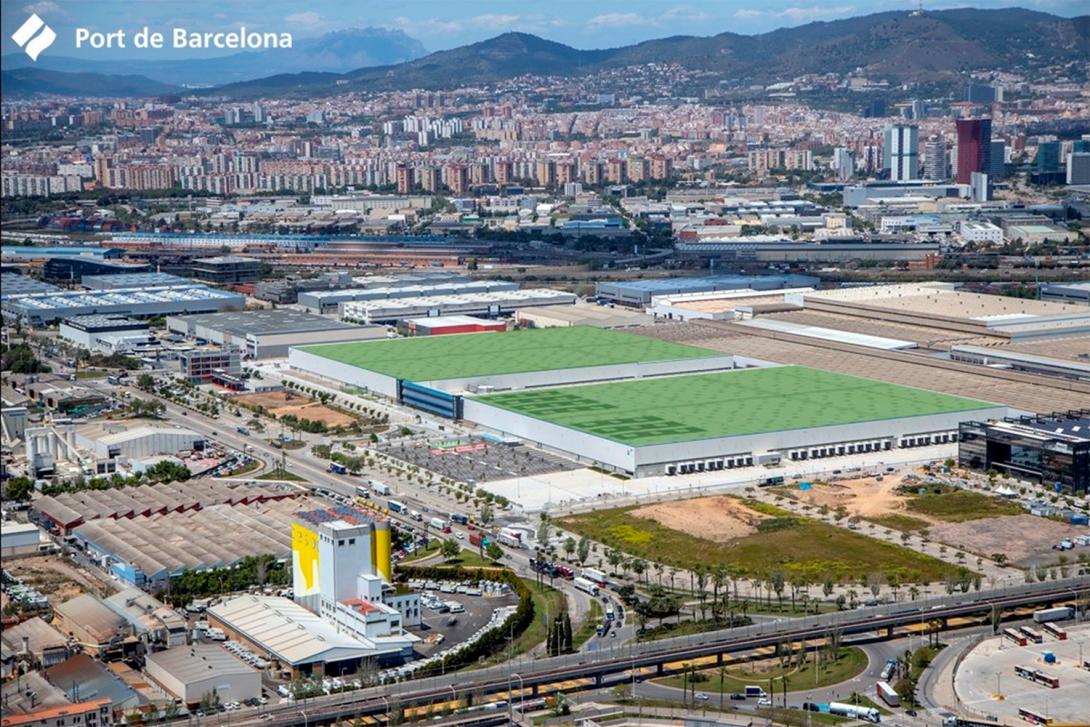The Port of Barcelona ZAL will have the largest rooftop photovoltaic plant in Europe
Cilsa has begun to fit the ZAL Port's first photovoltaic installation, with a capacity of 8.2 MWp, on the roof of the current Decathlon warehouse.
Once all the photovoltaic installations planned for the ZAL Port are in operation, it will have an installed capacity of 40 MWp, generating power equivalent to the consumption of 41,250 people.

The ZAL Port, the Port of Barcelona's intermodal logistics platform, will boast the largest rooftop photovoltaic plant in Europe. Cilsa, the company that manages the ZAL Port in which the Port of Barcelona and MERLIN Properties hold a stake, has designed an ambitious project to install photovoltaic panels on most of its current warehouses. The project will be rolled out in phases up to 2026 and is part of a plan to protect the environment and improve efficiency in the use of natural resources.
The first step towards building this large rooftop photovoltaic plant was taken this week with the installation of the very first solar panels on the warehouse occupied by Decathlon. This is a shared self-consumption installation covering 91,692 square metres, the equivalent of 15 football pitches, equipped with 19,846 panels totalling a peak power of 8.2 MWp and an estimated output of 9,862.65 MWh/year, equivalent to the consumption of 8,493 people.
This first photovoltaic installation represents an investment of around EUR 6 million and will make an outstanding contribution to protecting the environment, since it will save 2,465 tonnes of CO2 emissions a year, equivalent to the emissions of 725 cars (12,000 km/year in urban areas).
The second step in this Cilsa plan to convert the ZAL Port into an energy self-sufficient and environmentally sustainable logistics hub will involve installing solar panels on various warehouses of the ZAL Prat (the area of the ZAL Port that is located in the municipality of El Prat de Llobregat), which will guarantee 100% of the energy consumption of this entire area. Subsequently, the necessary facilities will be built to supply 100% of the energy consumed in the ZAL Barcelona (the area of the ZAL Port located in the municipality of Barcelona). And finally, panels will be installed in practically all of the logistics hub, making it possible not only to supply 100% of the energy consumed in the entire logistics centre but also to generate green energy for consumption by the Port Community and the Port of Barcelona itself.
Once all the photovoltaic installations planned for the ZAL Port come on stream, Cilsa will have installed 40MWp of power and estimates an annual power generation of 50,000 MWh, equivalent to the annual consumption of 41,250 people. This means generating the electricity needed to supply cities the size of Vilafranca del Penedès or Igualada throughout the year. Or entire Barcelona neighbourhoods such as Vila Olímpica or Trinitat Nova. This was announced today by Lluís Salvadó, President of the Port of Barcelona and Cilsa; Luis Lázaro, director of Logistics & Retail of MERLIN Properties, and Jordi Guerrero, general manager of Cilsa, during the presentation of the company's photovoltaic energy development plan.
Lluís Salvadó pointed out that the development of this photovoltaic installation is a further example “of the Port of Barcelona and the entire Port Community's commitment to decarbonisation. We are the country's economic infrastructure that is making the greatest effort and investment to reduce atmospheric emissions with our commitment to both photovoltaic energy and wharf electrification, developing new fuels, among other actions.” In the area of photovoltaic energy, the Port of Barcelona is working at full speed to create a photovoltaic production capacity on existing buildings and roofs within the port of between 92 and 100 MW of power and an annual electrical production of between 120 and 150 GWh. Around 10% of the capacity of this first phase (10 MW) is currently in operation. In a second phase, between 150 and 300 MW of additional power (between 190 and 350 GWH of annual electricity production) could be produced in the new developments planned within the port precinct.
For his part, Luis Lázaro stated that “the three pillars of MERLIN's commitment to sustainability are active management of climate change, well-being of the end user and achieving a positive impact on cities. And the energy transition towards renewable energy sources is playing a fundamental role in this. We are pioneers within the real estate sector with our project to install photovoltaic panels on our portfolio of assets to become the largest producer of photovoltaic energy in self-consumption installations of the Iberian Peninsula within our sector, and the plan designed by Cilsa for the ZAL Port means taking a further step in this direction.”
Jordi Guerrero explained how “Cilsa has focused its efforts in recent years on developing, building and managing nearly 1,000,000 m² of cutting-edge warehouses in terms of energy efficiency and sustainable construction, to set up a modern and environmentally friendly logistics park. Today, we begin a firm commitment towards the energy transition with the installation of up to 450,000 m² of photovoltaic panels and the goal of providing all our customers with the green energy required to cover 100% of their operational needs and reduce to zero the emissions of the ZAL Port generated by our logistics activity and by the services we provide.”



